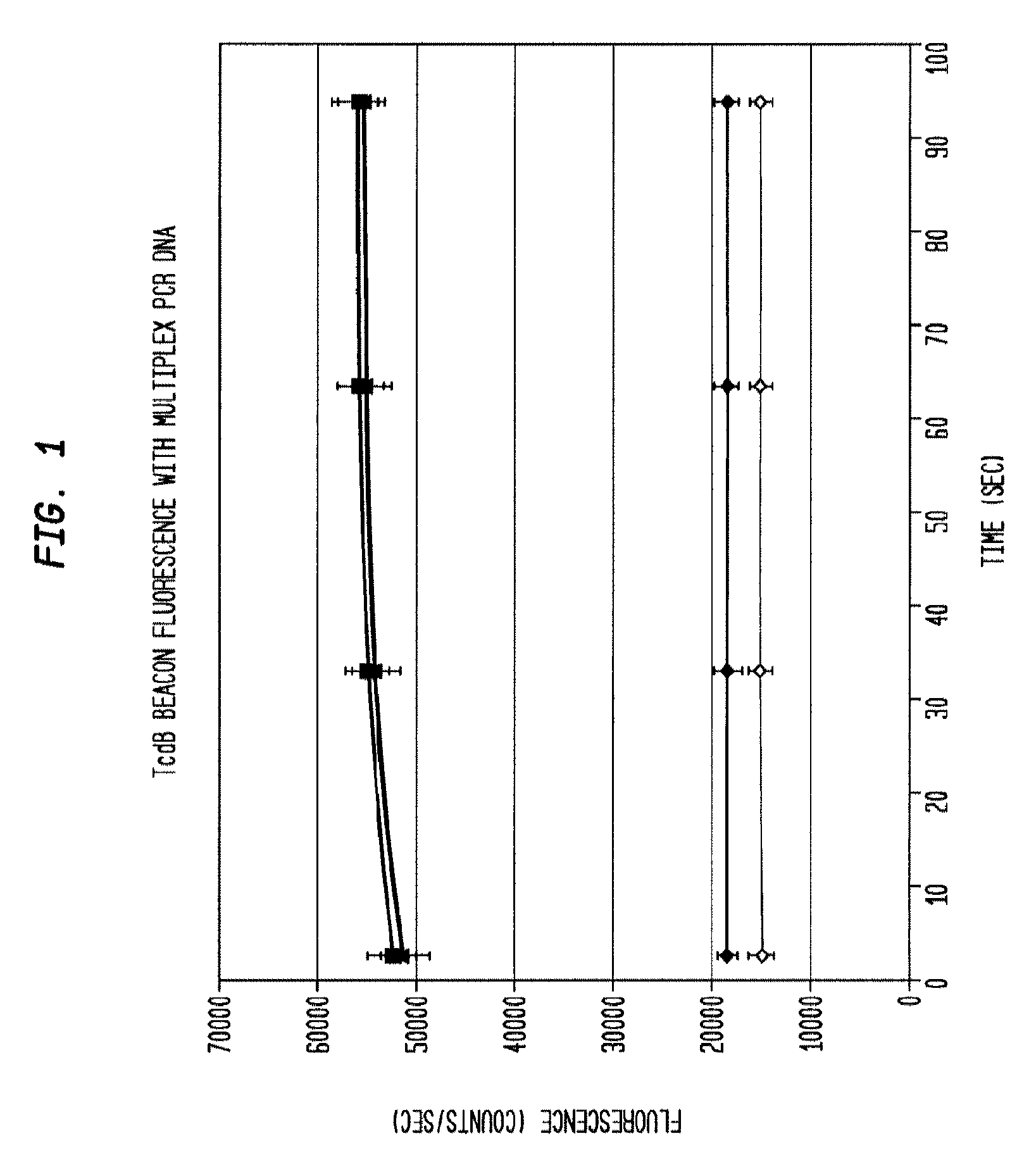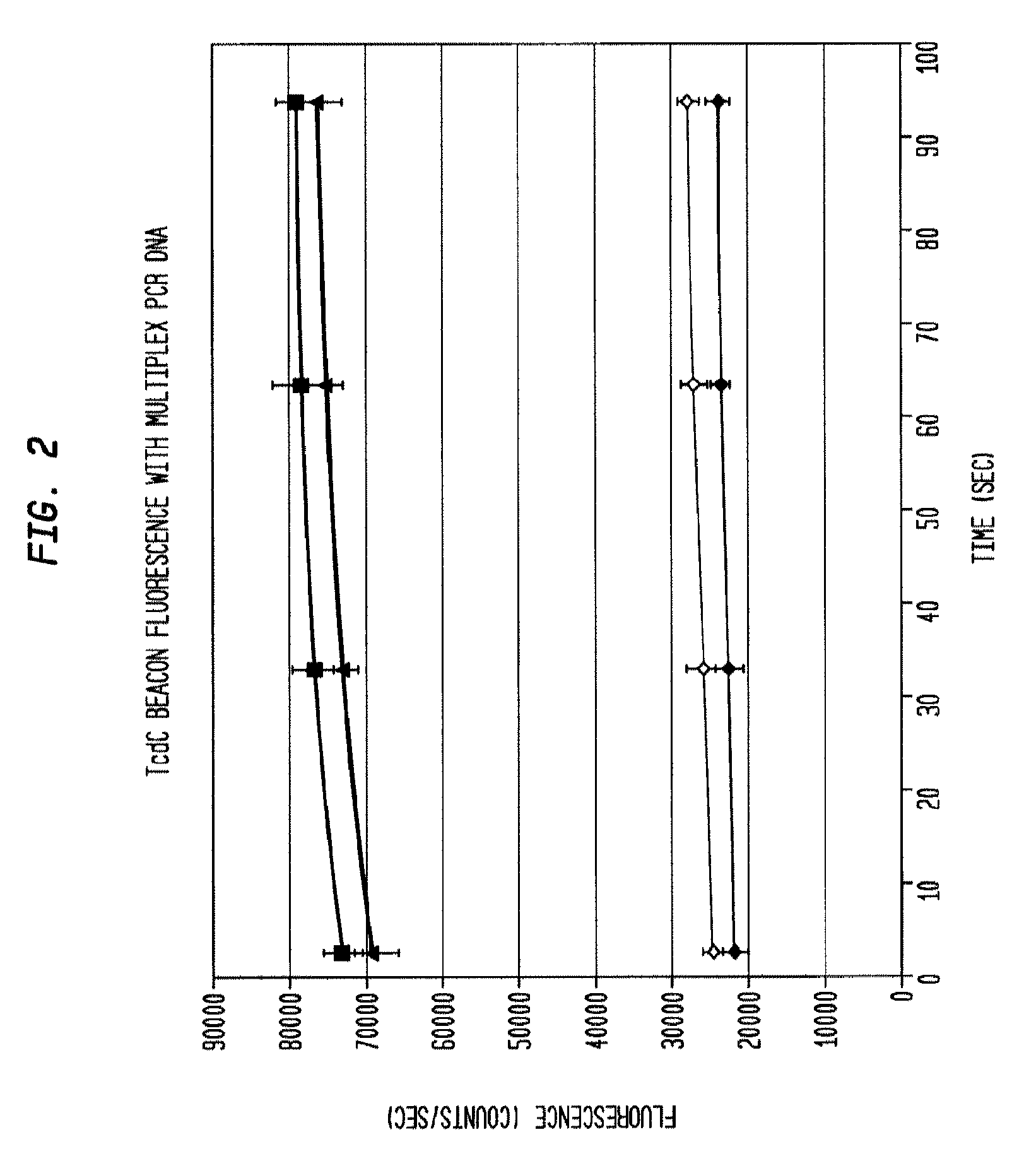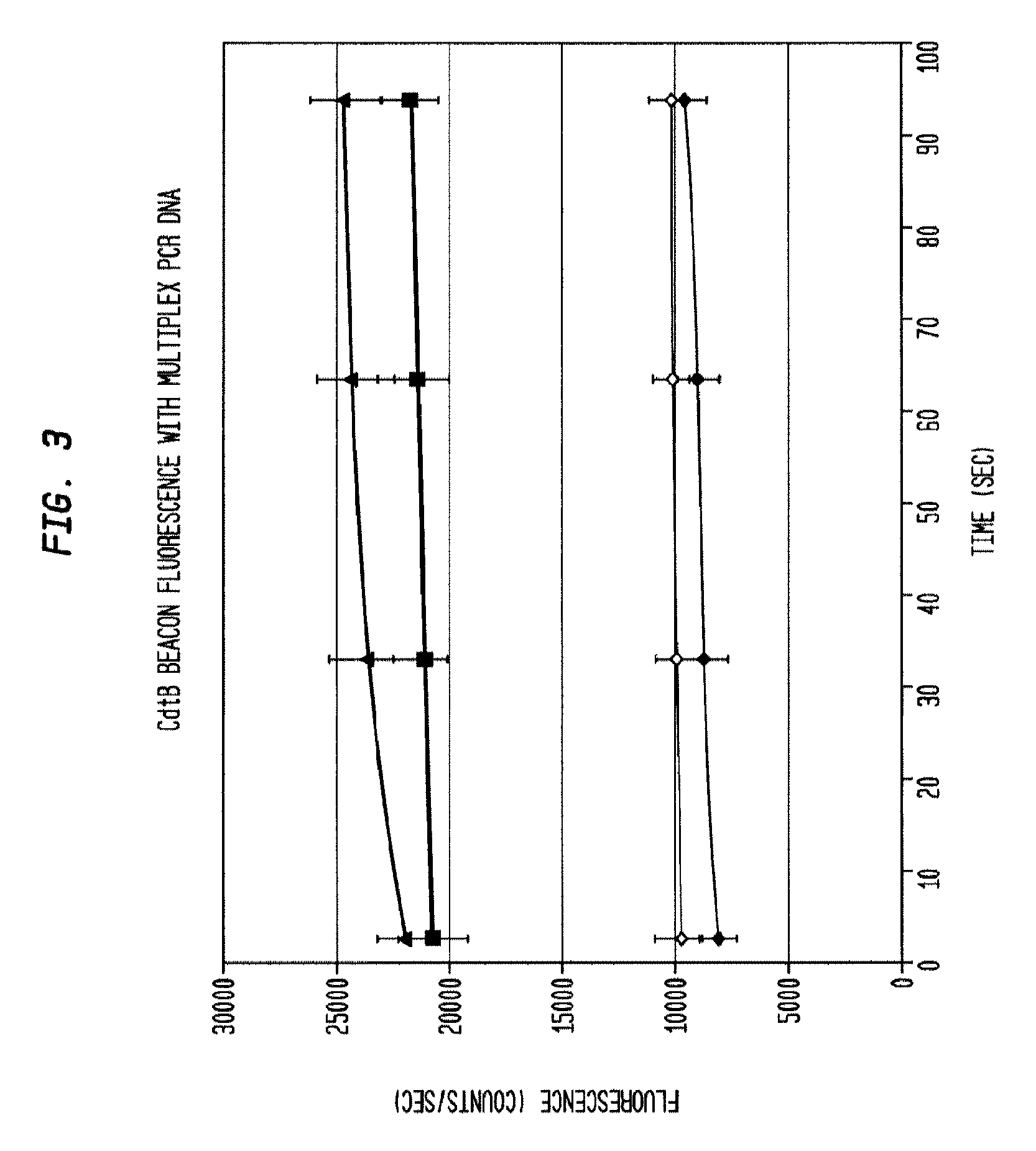Simultaneous quantitative multiple primer detection of Clostridium difficile
a multi-prime, simultaneous technology, applied in biochemistry apparatus and processes, organic chemistry, sugar derivatives, etc., can solve the problems of long optimization procedures, tedious and time-consuming assays, and complex assays
- Summary
- Abstract
- Description
- Claims
- Application Information
AI Technical Summary
Benefits of technology
Problems solved by technology
Method used
Image
Examples
example 1
Stool Processing for PCR
[0039]A swab was inserted into a clinical sample of stool at various locations and swirled into a tube containing 1 ml of sterile water (approximately 1:10 stool dilution) and allowed to settle. Two hundred microliters of the supernatant was placed into a sample cartridge for DNA extraction using the MagNA Pure system with the MagNA Pure LC Total Nucleic Acid Isolation Kit.
example 2
Multiflex Amplification by PCR
[0040]DNA isolated from clinical stool samples using existing commercial kits (Example 1) are added to a prepared 50 ul solution containing 5 ul 10× Taq polymerase buffer concentrate (New England Biosciences), six primers that specifically target three genes—tcdB, tcdC, and cdtB—found in the Clostridium difficile genome (0.167 uM each tcdB primer, 0.267 uM each tcdC primer, 0.267 uM each cdtB primer), 5 nM each of 3 dual-labeled probes (“molecular beacons”) each corresponding to one of the three target genes listed above that fluoresce in the presence of DNA amplified from their respective target gene, 0.2 mM each ATP, CTP, GTP, and TTP, 0.1 U / ul Taq polymerase, 0.1 ug / ul bovine serum albumin, and 6 mM magnesium chloride. A 0.2 ml polypropylene PCR tube containing the reaction mixture is placed in a thermal cycling apparatus using the following heating protocol:
Initial denaturation: 5 min at 94° C.
Amplification (40 cycles):
30 sec at 94° C.
30 sec at 61° ...
example 3
Interpreting Results
[0041]The reaction product is evaluated for the presence of the target amplicons using fluorescent hairpin probes described above. In the presence of the target amplicon a probe opens and fluorescence is observed and measured. With the use of differently colored fluorophores, the presence of multiple amplicons is assessed in the same tube without requiring further purification. Measurement is accomplished by exciting the fluorophores with the appropriate wavelength of light and then collecting light of the appropriate emission wavelength. In some embodiments, amplification of each gene product is evaluated using gel electrophoresis to separate the amplicons and then observing the sizes of the amplicons using fluorescent imaging by staining with a nucleic-acid-specific stain such as ethidium bromide. Thus, with 3 amplicons, the result is three bands. In the present example, the presence of each gene can be verified by size separation by gel electrophoresis and vis...
PUM
| Property | Measurement | Unit |
|---|---|---|
| temperatures | aaaaa | aaaaa |
| size | aaaaa | aaaaa |
| pulsed field gel electrophoresis | aaaaa | aaaaa |
Abstract
Description
Claims
Application Information
 Login to View More
Login to View More - R&D
- Intellectual Property
- Life Sciences
- Materials
- Tech Scout
- Unparalleled Data Quality
- Higher Quality Content
- 60% Fewer Hallucinations
Browse by: Latest US Patents, China's latest patents, Technical Efficacy Thesaurus, Application Domain, Technology Topic, Popular Technical Reports.
© 2025 PatSnap. All rights reserved.Legal|Privacy policy|Modern Slavery Act Transparency Statement|Sitemap|About US| Contact US: help@patsnap.com



